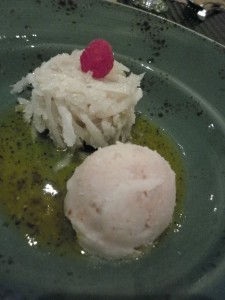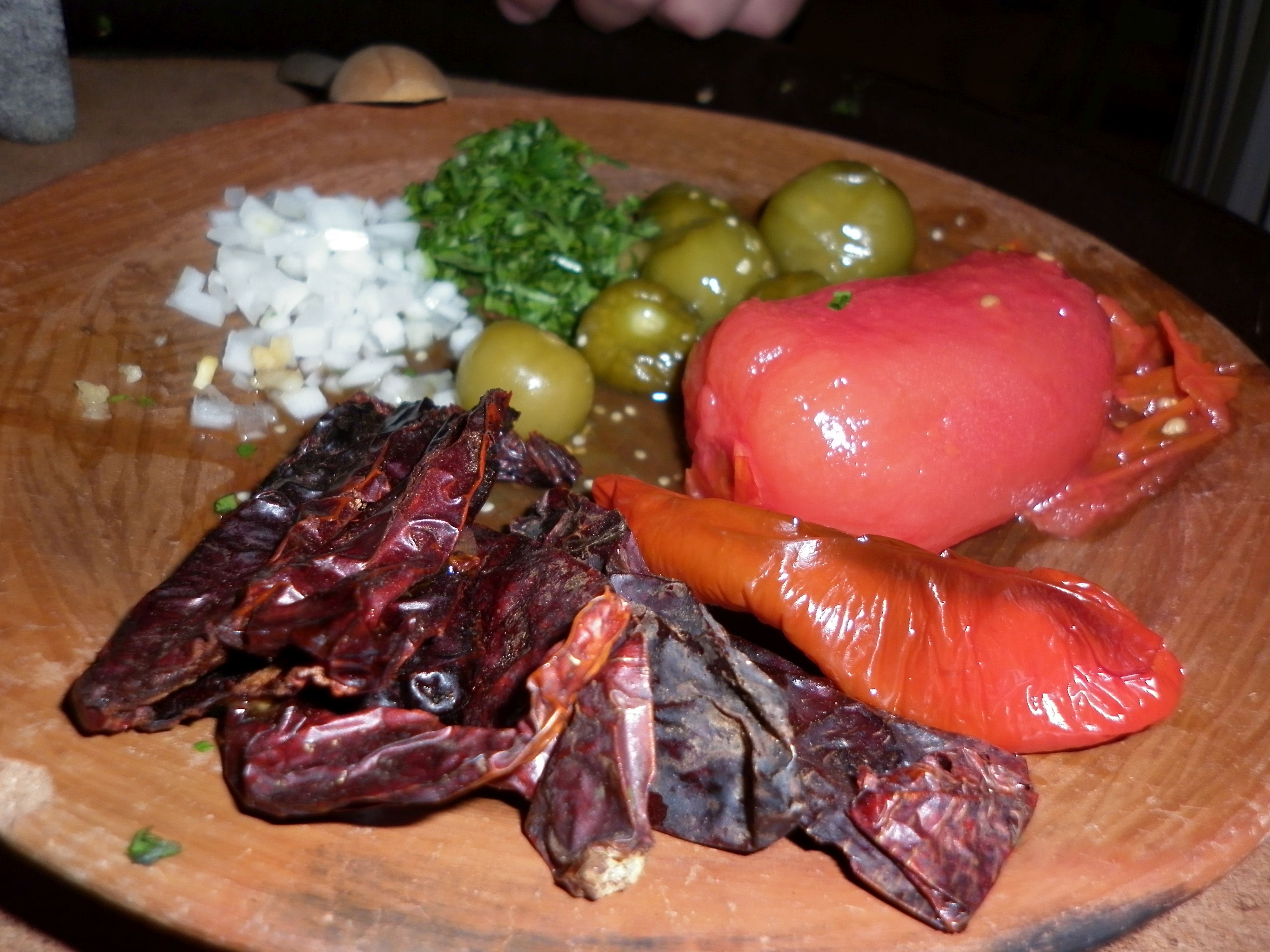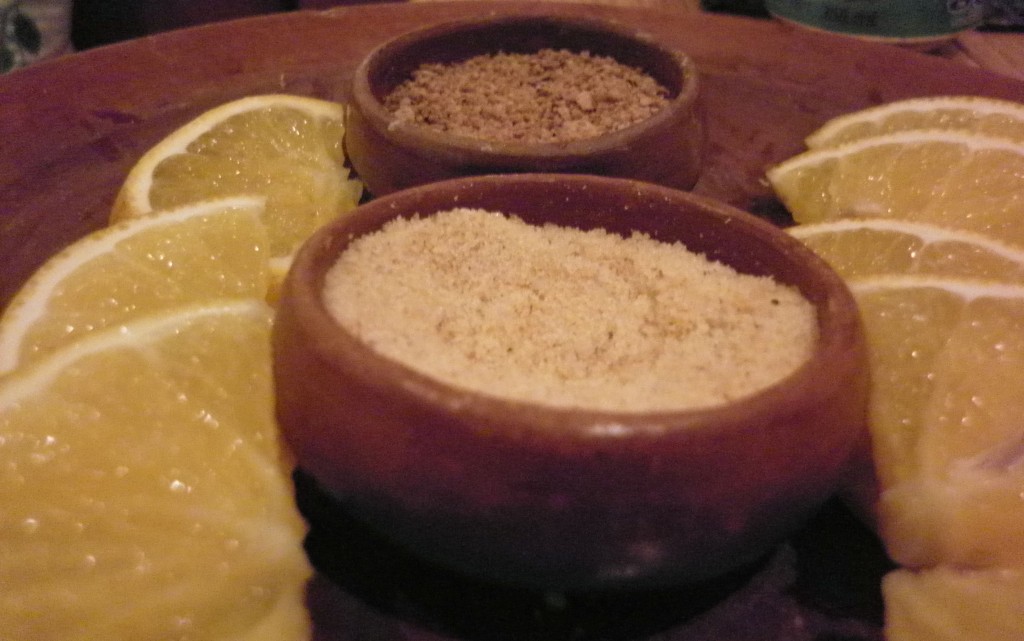I’m sitting at Guzina Oaxaca, a new restaurant in Polanco with an old friend from San Miguel days. Foodie companion and chef extraordinaire Shaw, has a serious love affair with Oaxacan food and is giving me a list of instructions on what to eat during my upcoming trip in May when hopefully the two of us can meet up amongst the mole.
“Tlayudas, hot chocolate, pan de yema, emoladas fragranced with avocado leaf, enfrijoladas, mole verde, mole amarillo … the best food is in the market stalls. Last time I was there it was for work and everything was condensed into 20-minute intervals. This time around I’m going to spend a whole week watching the guy who grinds the chocolate.”
As she speaks, our waiter is making us a tableside salsa with moritas – small,  smoked jalapeno peppers, peeled Roma tomatoes, small tomatillos called tomatillos milperos, cilantro and onion – a molcajete full of an ever so acrid blend of peppers with a lite bite and heavy complexity. He offers us blue corn tortillas toasted on the comal.
smoked jalapeno peppers, peeled Roma tomatoes, small tomatillos called tomatillos milperos, cilantro and onion – a molcajete full of an ever so acrid blend of peppers with a lite bite and heavy complexity. He offers us blue corn tortillas toasted on the comal.
Guzina is the new brainchild of Alex Ruiz, known for his restaurant Casa Oaxaca in Oaxaca City and as one of Mexico’s young chefs taking traditional Mexican food to haute cuisine heights. For a Thursday night in a new restaurant that’s getting lots of press, the place is pretty calm – we agree it would be better with outdoor seating on a tree-lined street in the Condesa than in the high-end strip mall it shares with AirFrance in Polanco.
 Location and empty tables are set aside though – we came for the food. We order creamy black bean tacos wrapped in hoja santa, Oaxacan empanadas with chicken in yellow mole (a sacred Oaxacan combination, says Shaw) and chichilo rojo mole on braised porkchops.
Location and empty tables are set aside though – we came for the food. We order creamy black bean tacos wrapped in hoja santa, Oaxacan empanadas with chicken in yellow mole (a sacred Oaxacan combination, says Shaw) and chichilo rojo mole on braised porkchops.
The chichilo mole is the more savory cousin of the traditional mole negro that has come to represent Mexican mole all over the world. It has burnt chiles, no chocolate and “actually ends up looking black on the plate,” according to my night’s Oaxacan food guide. This version, the chichilo rojo, is slightly lighter in color, with a nutty, smoked flavor – the result of its hodgepodge of dried chiles and dashes of clove and allspice.
We are definitely not struggling to get our food down.
“This food tastes right,” says Shaw. “Sometimes the problem with these vanguard places is that the food just doesn’t taste like it’s supposed to, and this tastes Oaxacan.”
Two mezcal martinis, one with cucumber and mint, the other, maracuyá (passion fruit) and apple, are followed by an El Portal Oaxacan stout and two shots of Alipus to sip – the place has over 40 brands of mezcal behind the bar.
 Dinner finishes up with toasted coconut atop a smear of maracuyá sauce and some rose petal sorbet. Even though I say I’m not interested (“I prefer to drink my dessert”) I end up eating half of it anyway, only because I feel it’s my journalistic duty.
Dinner finishes up with toasted coconut atop a smear of maracuyá sauce and some rose petal sorbet. Even though I say I’m not interested (“I prefer to drink my dessert”) I end up eating half of it anyway, only because I feel it’s my journalistic duty.
By the time we’re done (around 10:30), the place is a little livelier but it’s still not as packed as I expected.
The food has passed the expert’s (and the novice’s) taste test and I personally think it’s a great new edition to regional cuisine in Mexico City. I can’t wait to get to Oaxaca and eat some of the down-home cooking that inspired the menu.
Click here to subscribe via RSS


Great article on a great young chef. Thanks Lydia.
Thanks Joel, I’m definitely going to check out Casa Oaxaca when I head down south.